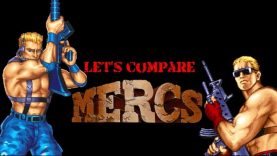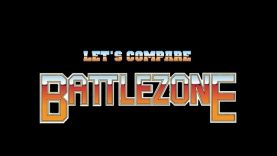Let’s Compare ( Lode Runner )
Gaming History Source
Video Locations:
1. Arcade 2:31
2. Apple 2 4:01
3. Commodore Vic 20 5:31
4. Fujitsu FM-7 7:04
5. ZX Spectrum 8:34
6. Enterprise 64/128 10:04
7. Amstrad 11:34
8. BBC Micro 13:04
9. Atari 8 bit 14:34
10. NEC PC8801 16:04
11. DOS 17:34
12. Sega SG-1000 19:04
13. Sharp X1 20:34
14. MSX 22:04
15. Commodore 64 23:34
16. Atari Lynx 25:17
17. Wonderswan 26:26
18. Macintosh 28:57
19. Atari ST 30:27
20. Amiga ( Original ) 31:57
21. Amiga ( Mine runner ) 33:27
22. Nintendo Entertainment System 34:57
23. Turbografx 16 36:27
24. Gameboy Color 37:56
25. Gameboy Advance 39:27
26. Windows 41:17
27. Playstation 43:42
28. Super Nintendo ( Power Lode Runner ) 46:12
Cred: 49:42
Description Link:
http://en.wikipedia.org/wiki/Lode_Runner
Lode Runner is a 1983 puzzle video game, first published by Brøderbund. It is one of the first games to include a level editor, a feature that allows players to create their own levels for the game. This feature bolstered the game’s popularity, as magazines such as Computer Gaming World held contests to see who could build the best level. Tozai, Inc. currently holds the intellectual property and trademark rights of Lode Runner.
History:
The prototype of what later became Lode Runner was a game developed by Douglas E. Smith of Renton, Washington, who at the time was an architecture student at the University of Washington.[3] This prototype, called Kong, was written for a Prime Computer 550 minicomputer limited to one building on the UW campus. Shortly thereafter, Kong was ported to VAX minicomputers, as there were more terminals available on campus. The game was programmed in Fortran and used ASCII character graphics. When Kong was ported to the VAX, some Pascal sections were mixed into the original Fortran code.
Over one weekend in 1982, Smith was able to build a crude, playable version in 6502 assembly language on an Apple II+ and renamed the game Miner. Through the end of the year, he refined that version, which was black-and-white with no joystick support. He submitted a rough version to Brøderbund around October 1982 and received a one-line rejection letter in response to the effect of “Sorry, your game doesn’t fit into our product line; please feel free to submit future products.”[3]
Smith then borrowed money to purchase a color monitor and joystick and continued to improve the game. Around Christmas of 1982, he submitted the game, now renamed Lode Runner, to four publishers and quickly received offers from all four: Sierra, Sirius, Synergistic, and Brøderbund. He took the deal with Brøderbund.













